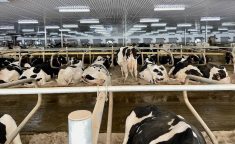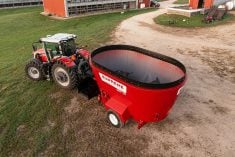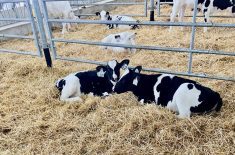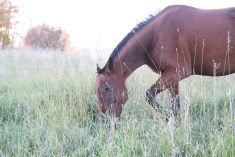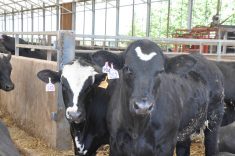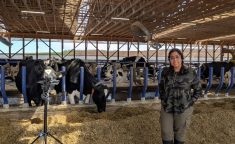A dairy farmer is separating the coarser fibres in his corn silage to create different feeds for the milking and dry cow herd.
He’s now selling the Fodd machine to other dairy farmers to reduce feed costs and improve the ration fed to milking cows.
Why it matters: Feed is one of the largest costs on a dairy farm so more efficient feeds can reduce that cost.
Read Also

Beekeepers want financial protection against tropi mite
Tropilaelaps (tropi) mites haven’t landed in Canada yet; beekeepers want to know they’ll get federal financial help if the deadly bee parasite ever does
Greg Friendsbruh says feeding coarser fibres to his dry cows and more consistent-sized silage to his milking cows results in more milk, and with 65 per cent home-grown forage in the ration, it reduces his feed costs.
Friendsbruh has about 1,300 cows and young stock on his farm in Wisconsin, and like many dairy farmers, he fed straw as part of the ration, especially to dry cows. In 2019, his straw was of poor quality and quantity and he needed more forage.
“Our straw we were feeding the cows was mouldy and expensive,” said Friendsbruh at the World Dairy Expo in Madison, Wi., where he promoted the Fodd system.
He and his consultants decided to pull the stover constituents from his corn silage to feed the dry cows.
“Basically we’re trying to pull the corn and the energy out of the stover,” he says.
Silage corn is the least-cost ingredient in his area of Wisconsin, so it made sense to grow more corn, separate the rougher fibres and create a higher energy diet for the milking cows.
“The economics in the states are pretty sound. We’re saving $150 per head per year in feed costs, and we’re earning another $150 per cow per year in the milk bump that we get.”
Use of the Fodd silage separator involves a change in feeding process. A processing centre must be created that houses the separator, which must be regularly fed with silage.
“This machine on our 1,300-cow dairy with young stock runs about five and a half hours and it will sort all the feed that we need for that day,” says Friendsbruh. Without young stock, the current separator model can sort enough feed for 3,000 milking cows. The hopper has to be filled every 45 minutes to keep it going.
Friendsbruh says they fill it and let it sort, then start to feed the cattle. As they return for more loads, the separator has created more differentiated feed as they need it.
The dairy has changed the way it manages its mixed ration feed ingredients. Friendsbruh says they bring all the ingredients to the feed centre and pile the day’s corn silage next to the separator.
“So at that point in the day, when we’re mixing feed, all the ingredients are close and the machine can purr along and do its job.”
The plan is to size the machine down so it will suit smaller herds in the industry.
Most dairies process straw for various rations. Using that processing time to separate silage eliminates the need to process straw.
Friendsbruh says the dairy’s feed efficiency is high and he plans to study the reasons. He says more of the separated silage shows up on the middle screen of a shaker box (used to analyze feed particle size), with less on the top and bottom screens, meaning the ration is more uniform.
The separated silage portion might seem like rocket fuel for cows, and Friendsbruh says he was initially worried about that. However, he says the starch level isn’t much higher and there was no increase in acidosis or laminitis.
His goal is to have the system pay for itself in 10 months.
“The hope is to keep the price point in that spot so farmers can enjoy the benefits and put some money in their pockets.”



